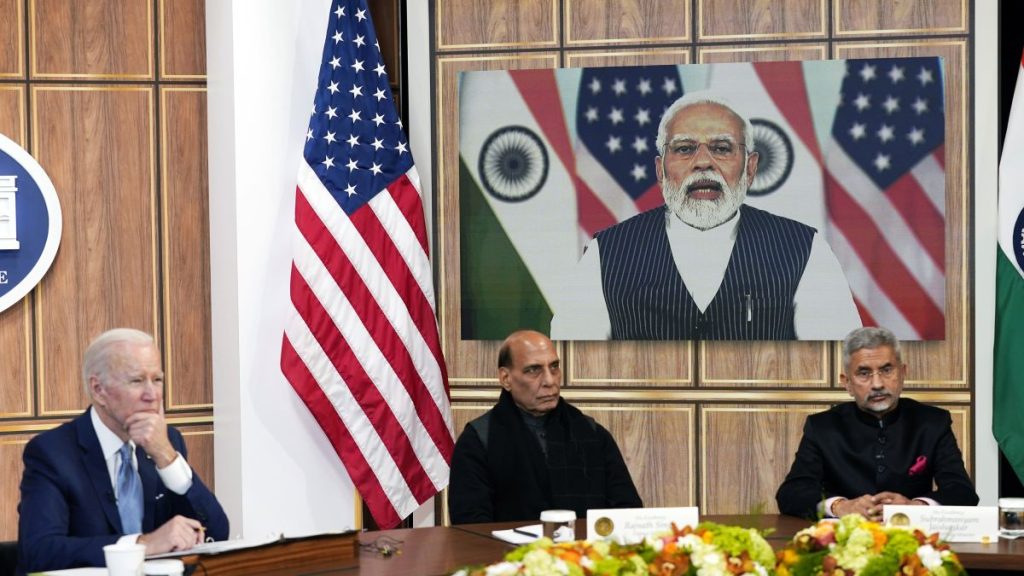Why India can buy Russian oil, and still be friends with the US

Not only was the South Asian country refusing to condemn Moscow’s brutal assault on Ukraine, but its purchases of discounted Russian oil — said critics — were flying in the face of sanctions aimed at crippling the Kremlin’s finances.And the White House was making its displeasure clear, calling New Delhi “somewhat shaky” and speaking of its “disappointment”.Then all of a sudden, the West’s tune changed. When Biden met Indian Prime Minister Narendra Modi this month, it was all diplomatic backslapping and soundbites about “a deep connection between our people” and “shared values.” Then on Friday UK leader Boris Johnson flew into Delhi to talk up trade ties and pose for costumed photo ops, all while glossing over “differences” regarding Russia. Yet India’s stance on Ukraine remains largely the same. It is still buying cheap Russian oil — in fact, it has bought nearly as much in the first months of 2022 as it did in whole of 2021, Shared concerns over Chinese aggression were made clear after the Biden-Modi meeting, when US Defense Secretary Lloyd Austin warned China was seeking to “refashion the region and the international system” and said the US and India had “identified new opportunities to extend the operational reach of our militaries”. It was a sign that — whatever their differences over Ukraine — the two countries had a deep “understanding of each other’s positions,” said Manoj Kewalramani, a fellow of China studies at the Takshashila Institution in India.Vocal on China, silent on IndiaThese concerns help explain why Washington continues to criticize China’s silence on Russia’s actions in Ukraine, even as it turns quiet on India’s.Superficially, at least, India and China appear to have similar positions on the Ukraine war. Both have positioned themselves as neutral onlookers — rather than vocal opponents — both have called for peace and both have refused to condemn the invasion outright.And both have strategic relationships with Russia that they are keen not to jeopardize. Chinese President Xi Jinping and Russian leader Vladimir Putin declared in February their relationship had “no limits,” while on some estimates India gets more than 50% of its military equipment from Russia.This was when Russia started providing arms to India, and India remains heavily reliant on Russia for military equipment to this day. In 2018 India inked a $5 billion weapons deal with Russia for an air defense missile system, despite the deal potentially putting it in the crosshairs of Washington’s Countering America’s Adversaries Through Sanctions Act, a federal law passed in 2017 which imposed new sanctions on Iran, Russia and North Korea. India’s dependence on Russian arms limits its ability to denounce Moscow’s actions in Ukraine. When Putin visited Delhi last December, Modi even called Putin a “dear friend.”‘Wooed by all sides’All this has led to a position in which India is being “wooed by all sides,” Pant said.Moscow remains onside, and remains keen to sell India discounted oil. Russian Foreign Minister Sergey Lavrov even met his counterpart in Delhi this month and praised India for not looking at the Ukraine war “in a one-sided way”.And onside too is the West, ties with which have been growing ever closer since Modi’s election in 2014. Annual India-US trade is more than $110 billion, compared to India’s trade with Russia, which amounts to about $8 billion. In recent years, India has also become a major customer for US military equipment.Even so, at Biden’s meeting with Modi there remained a hint of unease. The US President urged his Indian counterpart not to step up his country’s use of Russian oil, instead offering to help him acquire oil from elsewhere. India, which imports 80% of its oil needs, gets no more than 3% from Russia. So it appears India has managed to pull off an impressive balancing act.”India actually comes out very strong from this crisis,” Pant said. “And that’s quite a feat actually.”CNN’s Manveena Suri and Hannah Ritchie contributed




